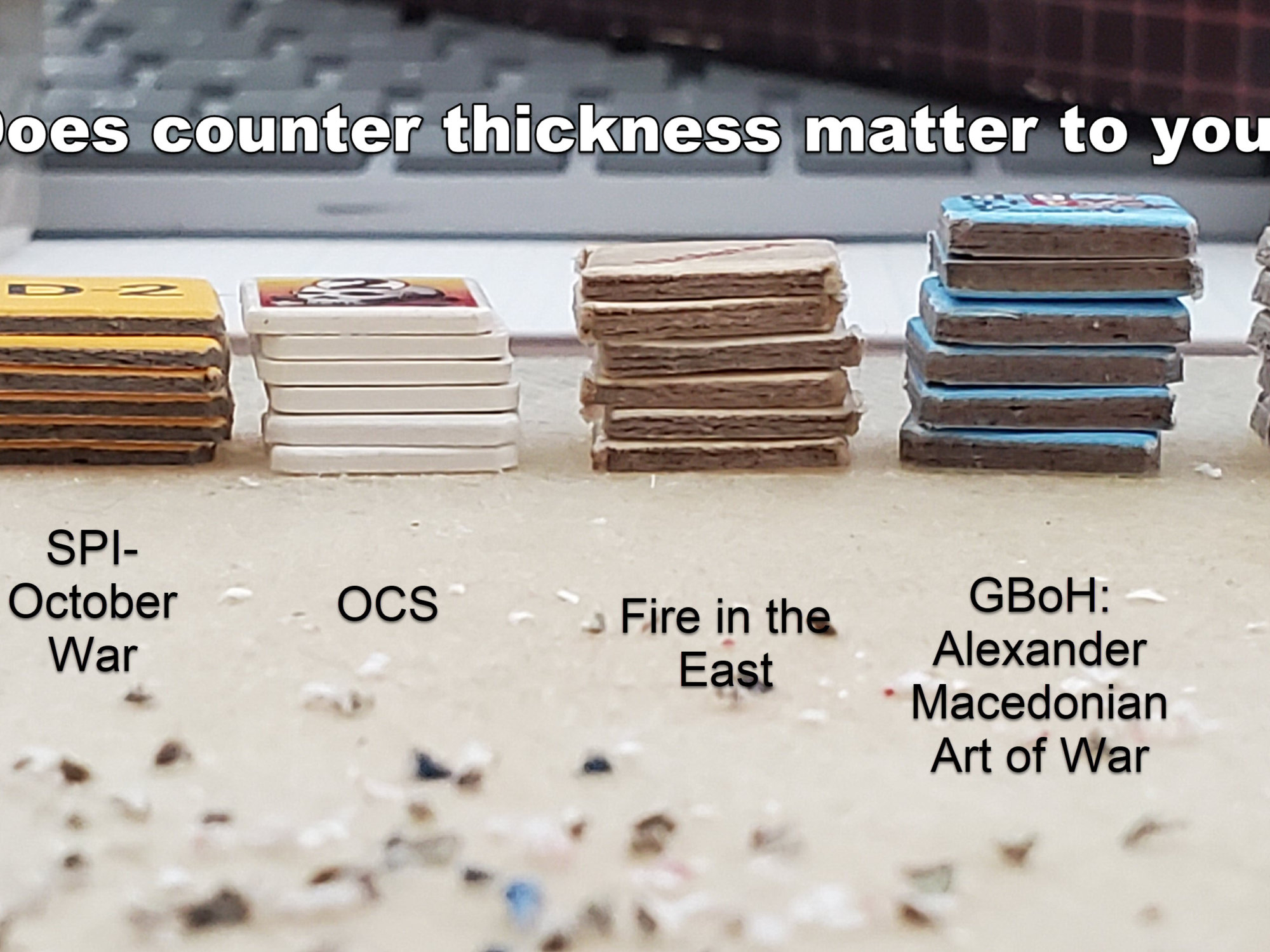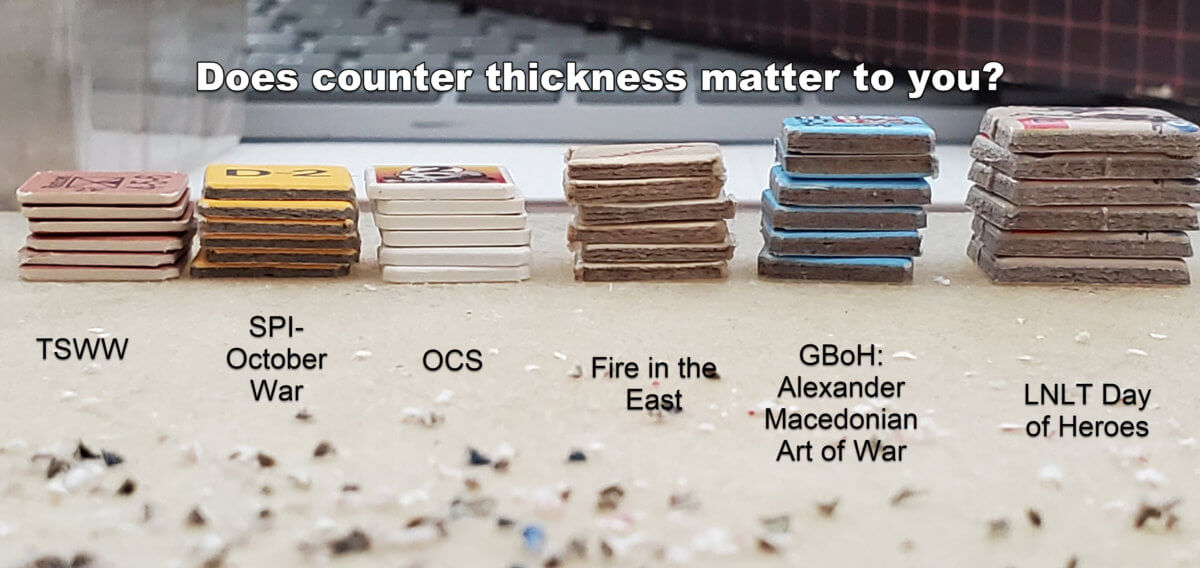As we settle into an extra day of rest and honor the hard work, and efforts, innovation and achievements of the USA this Labor Day I ask a question that will allow you to sit with your circle of friends and discuss over a nice cold one, maybe a hotdog grilled to perfection or a juicy burger rife with grilled onions and that plastic American cheese that sticks to your arteries! All had perhaps with a side of crinkle cut chips.
Does Counter thickness matter?
As you and your neighbors, friends all settle in, adjusting themselves on your almost comfortable COSTCO patio furniture, paper plate in hand, the Mrs dutifully if not adoringly looks expectantly at you to initiate another of your scintillating BBQ side conversations, perhaps now is the time to broach this humdinger of a question!
For years purists, ideologues and counter fascists have sought to answer the question with a compelling answer that would once and for all end this discussion and prove incontrovertibly that Counter thickness does indeed matter or does not.
The Function over Form set, just want to play a solid well constructed wargame, and the art, the interface with charts, the usability of the rulebook and most certainly the counters DO NOT Matter. The most pressing element in their world view is the ability for one to engage in the game play, and history, to play together in peach and harmony with fellow wargamers.. Lets all just get going and play that game!!
The Form over Function set, are opposed to this view of course. Counter thickness does indeed matter. Why it matter so much that a game that slaps you extra thin, or perceived extra thin counters cannot possibly be a good game. It cannot be a worthy game, as surely the designer did not care enough about his or her design. If he cared the entire EXPERIENCE the counter would be thicker. Thus he tears at the game picking it apart, demolishing it in a riot of disgust and frustration. Lashing out at all aspects of this injustice. How DARE the designer make such a shabby game.
Careful how you broach the topic, as it may well end a friendship, create an enemy or be seen as a divisive and contentious discussion topic.
What say you oh great Labor Day labourer!!!? What say you?


Like most conundrums, the answer lies somewhere in the middle.
Yes, it does matter, as you so aptly describe: it’s a kind of early indicator of lack of quality, and colors the judgment of a reviewer or first-time player, who is now disposed to thinking the rest of the game is going to be just as chintzy as the insultingly-thin pieces.
But, *if* the game is simply a design masterpiece, and everything else is spot-on … you’re not going to hold a caliper against it. Particularly if it was not traditionally published in a nice, full-color box. If the goal was a ziplock-bag game with black and white components on the cheap… and the designer just hit one out of the park, well, so be it. Ogre comes to mind (not my cup of tea, to be sure, but most of my high school gaming buddies went APE over that one!!!) The monochrome nature of the package will be a mark against our classic-in-the-making in the final analysis. So, maybe it’s an “A” game instead of the GoaT A+ classic it would have been had it gotten a better production run.
Just as a side note, I suppose you don’t own any of the old, original Battleline games, like Air Force, Dauntless, the original Wooden Ships & Iron Men, Flat Top, etc. Because in there, you’d find counters thicker than a gourmet steak!!! Those would be at the far right of your photo, no problem!!
Anyway, on a physical level, I’ll quibble a lot more with **other** faux pas in a game first: no hex IDs on the map (*cough* LaBattaille *cough*); or the classic extra-bold row of klunky hex IDs unevenly slashing across the map at 5 hexrow intervals; caltrops hex junctures; those infernal terrain type dots in the middle of each hex (the stupidest idea of them all; the artwork on the map should tell you what the terrain is; that’s the whole POINT!!); white hex boundaries where they are not needed (and that’s hardly EVER that they’re needed; maybe for a game set in outer space). All of these above are probably instant disqualifiers (I’d have to hear a lot of good things about such a game before I’d buy it, knowing it had any of those features in it). If I knew going in about thin counters? Meh.
Lastly … if a person (theoretically, you understand) is one of those “counter-clipping cretins” who make a habit of defacing one’s pieces before one even does battle with them… you don’t get to complain about thickness. Such a gamer is already overly concerned about aesthetics, at the expense of the raison d’etre for a game: the exploration of the battle itself; so, my opinion is such a person is mired in the nearsightedness of “forest-for-the-trees” mentality.
I have many older games…yes super thick -especially CV and Flattop! I just thinkt eh bang for buck for TSWW when it comes to counter is severely wanting…plus this is a bit of a metaphoric bit about what matters…
I think I’m in a middle position too…..Too thin, and my overall evaluation of the game goes down of two magnitudes. Anything that I consider “acceptable”, and I don’t care about counter thickness anymore.
On the other hand, I’ve always hated the old AH counters, no matter the thickness
Counter thickness quality matters–to a point. What stuns me is when the wargame publishing seems to pull out all the stops in terms of every other aspect of physical production (e.g., counter artwork, map thickness and graphic beauty, sturdy cardstock for well-engineered charts, etc.) but has wafer-thin counters. It’s my nit-pick with Compass Games on their otherwise well-made re-release of RUSSIA BESIEGED. But I still play the game and will always want to play it.
Speaking of thickness, I just got my copy of BATTLES magazine #14 with 1936 MIRACLE OF NOVEMBER: STORM OVER MADRID. The counters are small but of hefty thickness; they seem almost to be made of plastic! It says in the magazine that they were printed by Taktyka i Strategia, Poland. I’m guessing that means not just the printing of the surfaces, but the actual physical production of the countersheets. I stand and applaud Olivier Revenu for this production decision and all those involved in its execution!
Yes, it depends, but only to a point. I have to admit I am a counter clipping cretin but I do that out of respect to the fact that I treat my investments in games as not just a hobby but a passion. So there I admitted it. Too thin and even the venerable tweezers cannot pick them up to flip to the “reduced side” or see how many attack/defense/etc. are in the stack. Sure you can take it too far and soon you have something the size of a wooden block. But certainly “Lock n Load” size counters are easy (or easier) to manipulate than the old SPI sized counters – for me. I have no TSWW games but the picture Kev posted is enough to convince me they are exceptionally thin – to a fault.
Thin counters are trash.
It is a board game that at its heart requires you to handle and move pieces about the map. If I can’t pick them up to do that in a simple manner…
If you have fat fingers and can’t pick up a stack without blasting it across the map like you are playing 52-card pickup, I can forgive you, but if you need tweezers because human fingers / fingernails can’t get a grip, then shame on the manufacturer.